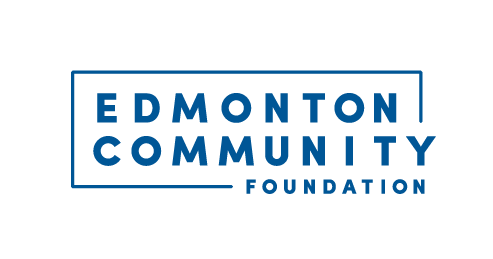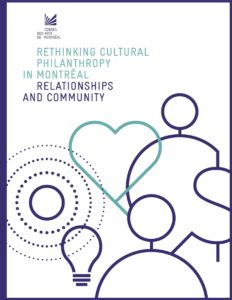From January 6 – February 24, 2021, the Edmonton Symphony Orchestra hosted the Evolution of the Arts in a Digital World Symposium: a free virtual event. Their 8-week Symposium covered a variety of topics including the role digital technology plays in arts organizations, how digital technologies can be used to enhance arts performances, the movement towards integrating technology for not-for-profit organizations, emerging tools and resources to use to create digital content, the power of storytelling with digital technology, and much more.
The Symposium provided an opportunity for attendees to hear from a multitude of experts on how digital technologies are being used by arts organizations in performances, within buildings, and in online spaces. Speakers included world-renowned acousticians, local exhibit designers, and artists who work with digital media. These symposium sessions provided a different flavor each week; from informational presentations, to discussions, to question-and-answer sessions, participants had many opportunities to learn how to utilize technology to enhance live experiences, no matter the size of their organization. The sessions were well attended, with representatives present from across the arts and non-arts sectors, and attendees participating from across Canada and internationally.
Below is a resumé of the 8 sessions, along with links to read detailed notes and watch recordings:

1. Why Digital?
Wednesday, January 6, 2021
Why is digital technology important? And why it has become increasingly so in the past year? Presenters Annemarie Petrov, President and CEO of the Francis Winspear Centre for Music and Edmonton Symphony Orchestra, and Tateo Nakajima, ARUP Fellow, will discuss the benefits and costs of digital technology, including: Technology in physical gathering spaces, How non-profit arts organizations can find new ways to bring their community together utilizing technology and Using technology to reinforce organizational values, brand, and vision.
2. Using Digital as a Tool in Storytelling
Wednesday, January 13, 2021
Participation. Joy. Action. How do we use technology – a tool devoid of emotion – to stimulate these reactions in people? In many cases, we will need to reimagine the stories we are telling and the ways in which we can resonate with our audiences, whether in person or virtually.
Gretchen Coss, Senior Vice President of Strategic Partnerships with Gallagher & Associates, highlights specific considerations to harness the power of digital storytelling.
3. Playful Interactives
Wednesday, January 20, 2021
Evelyn Delgado, children’s museum development consultant, takes us through her exhibit creation process and help us understand some of the considerations and options for engaging both younger and older audiences with interactive technology. She talks about designing and implementing exhibits that effectively engage, instruct, and entertain our audiences.
4. Emerging Digital Technologies: Endless Possibilities on a Budget
Wednesday, January 27, 2021
Renowned Digital Media Storyteller for the New World Symphony and Professor of Immersive Filmmaking at the University of Miami, Rafael Baldwin, takes us on a technological journey that introduces us to emerging tools and resources that would give an edge to any content and marketing strategy – from lenses and apps that enhance the cameras on our phones to creating interactive videos, personalized content, and immersive virtual realities.
5. Fireside Chat: Institutional Change, Funding, and Infrastructure
Wednesday, February 3, 2021
This event includes a high-level discussion about some of the major and most daunting factors, to help set myths about them to rest. A group of experts engage in a moderated conversation about the institutional change required to successfully integrate digital technology in day-to-day operations, finding and engaging with new funders and funding methods to make digital possible, and creating the infrastructure required for successful digital integration.
6. Artists and Technology Working Together
Wednesday, February 10, 2021
Scott Smallwood, sound artist and professor at the University of Alberta, and Paola Prestini, composer and founder of National Sawdust, explore the convergence of artists and technology. From using VR to experience an orchestra to creating sound art exhibits within physical and digital spaces, Scott and Paola have a world of experience to share. They discuss accessibility within venues, sound as a medium, the infrastructure required to create immersive sound experiences, and the interdisciplinary work that engages artists and technology to create amazing new artistic experiences.
7. Immersive Vs Interactive Technology: A Practical Guide
Wednesday, February 17, 2021
With the many different types of digital technology available for use, deciding which technology to use can be a big step. This panel of local experts share their experience working on various immersive and interactive projects in Edmonton and Calgary. They provide advice, recommend specific technologies, discuss the prevalence and changing methods of creating immersive and interactive experiences, and leave audience members with an understanding of the ways in which they can utilize these technologies to expand their organizational offerings.
8. Expanding Our Horizons: Innovation, Transformation, and the Future
Wednesday, February 24, 2021
The future of our organizations depends on our ability to adapt to the new world we live in. We all have questions and want to know what’s next, what’s possible, and how we continue making good art in our world. Annette Mees, head of Audience Labs at the Royal Opera House, helps us look towards the future at how we can make art an important part of the digital boom. She discusses different ways of approaching projects, transformation in what a digital team might look like moving forward, and explore new funding options.
This Symposium was made possible through the generous support of the Canada Council for the Arts, Arup, and the Edmonton Community Foundation.



 in the fall of 2020 to better understand Canadian orchestras’ digital activities in the age of COVID. We’d been informally monitoring this work since the start of the pandemic; even so, we were bowled over by the range of orchestras who have embraced digital content capture and sharing, their learnings, their honest expression of the challenges, their commitment to keeping artists working, and to maintaining lively and engaging contact with their communities. Learnings from the survey will certainly influence OC’s advocacy and learning efforts moving forward. But I think the survey’s greatest value could be its reflection back to respondents of the vitality and shared interests across the Canadian orchestral community.” – Katherine Carleton, Executive Director at Orchestras Canada.
in the fall of 2020 to better understand Canadian orchestras’ digital activities in the age of COVID. We’d been informally monitoring this work since the start of the pandemic; even so, we were bowled over by the range of orchestras who have embraced digital content capture and sharing, their learnings, their honest expression of the challenges, their commitment to keeping artists working, and to maintaining lively and engaging contact with their communities. Learnings from the survey will certainly influence OC’s advocacy and learning efforts moving forward. But I think the survey’s greatest value could be its reflection back to respondents of the vitality and shared interests across the Canadian orchestral community.” – Katherine Carleton, Executive Director at Orchestras Canada.  have done a remarkable job of reinventing themselves during COVID. The amount and quality of digital content produced are exceptional. It has not only kept orchestras closely connected to their public but also brought in new audiences. It is clear our sector must continue innovating to grow our impact. However, funding questions are already apparent and will only become more glaring when we start presenting live concert seasons again.” – Neil Middleton, VP Marketing & Sales at the Vancouver Symphony Orchestra and board member at OC.
have done a remarkable job of reinventing themselves during COVID. The amount and quality of digital content produced are exceptional. It has not only kept orchestras closely connected to their public but also brought in new audiences. It is clear our sector must continue innovating to grow our impact. However, funding questions are already apparent and will only become more glaring when we start presenting live concert seasons again.” – Neil Middleton, VP Marketing & Sales at the Vancouver Symphony Orchestra and board member at OC.  digital initiatives since March 2020 is an exciting statistic. Many of us have been wanting to expand our digital offerings; however, the expertise, funding and fear held us back. This pandemic has opened that door for all of us, which is a wonderful opportunity.” – Taras Kulish, Executive Director at the Orchestre classique de Montréal.
digital initiatives since March 2020 is an exciting statistic. Many of us have been wanting to expand our digital offerings; however, the expertise, funding and fear held us back. This pandemic has opened that door for all of us, which is a wonderful opportunity.” – Taras Kulish, Executive Director at the Orchestre classique de Montréal.